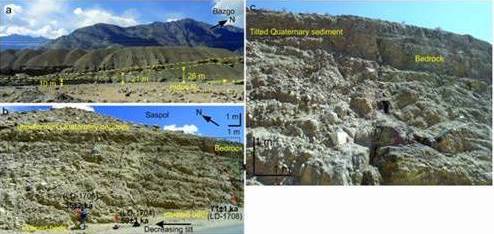
Contrary to previous understanding, the suture zone of the Himalayas is tectonically active
Dehradun: The suture zone of the Himalayas or the Indus Suture Zone (ISZ) in the Ladakh region where Indian and Asian Plates are joined has been found to be tectonically active, as against current understanding that it is a locked zone. (Suture means a line of junction formed with the collision of two crustal plates).
This could have major implications in terms of earthquake study, prediction, understanding the seismic structure of the mountain chains well as its evolution.
Also read: Study reveals Arunachal Himalaya generating moderate earthquakes at two different depths
The findings have been made by a study group of scientists from Wadia Institute of Himalayan Geology (WIHG), Dehradun, who carried out detailed mapping of geological features of the remote regions of Ladakh that forms the most hinterland part of the Himalaya. The study has been published recently in the journal ‘Technophysics’.


The geologists observed that sedimentary beds are tilted and thrust broken, the rivers are associated with uplifted terraces, and the bedrock shows brittle deformation that occurred at much shallower depths. These deformed geological features were then dated in the laboratory at Dehradun using a technique called Optically Stimulated Luminescence (OSL) (method for carrying Luminescence dating of geological sediments) and data of seismicity and denudation rate reviewed. The combination of field and lab data suggested the region of the Indus Suture Zone (ISZ) has been neo-tectonically active since the last 78000 — 58000 years and a recent earthquake in 2010 of low magnitude 4.0 near the village of Upshi that occurred due to a thrust rupture.
Himalayas were known to be made up of north dipping thrusts like the Main Central Thrust (MCT), the Main Boundary Thrust (MBT), and the Main Frontal Thrust (MFT). As per the established models, all of these thrusts except MFT are locked, and overall deformation in Himalaya is being accommodated only along with the MFT. The new findings, which suggest a more remote fault at the suture zone being neo-tectonically active, could call for a serious relook into the existing evolutionary models using new techniques and a larger geological database.
– globalbihari bureau





